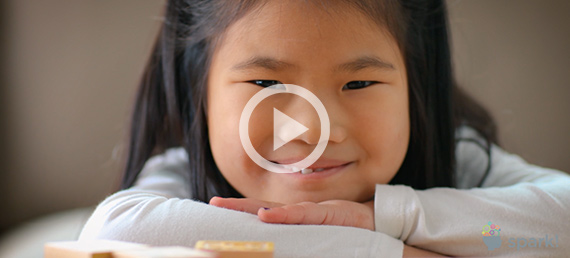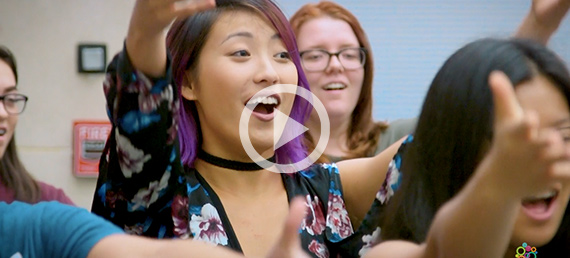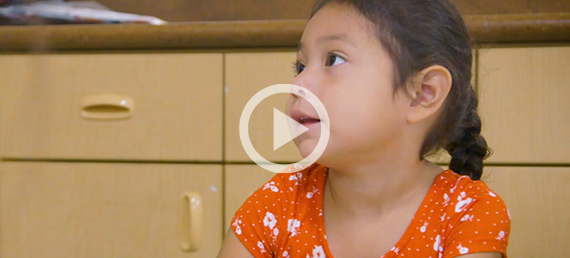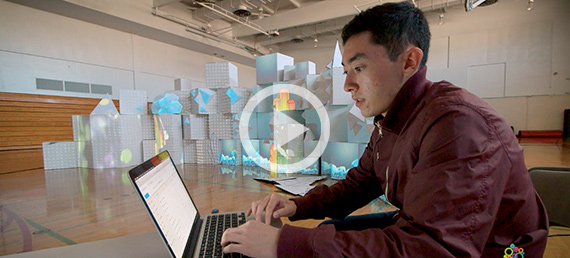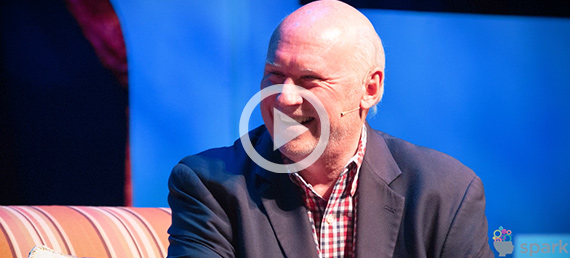What
what impact do the arts
have on our community?
"Arts education aids students in skills needed in the workplace: flexibility, the ability to solve problems and communicate, the ability to learn new skills, to be creative and innovative, and to strive for excellence."
— Joseph M. Calahan,
Director of Corporate Communications, Xerox Corporation
Our future economy demands better-educated workers. Research proves that children and teenagers who receive a more creative education are three times more likely to stay in school and graduate.
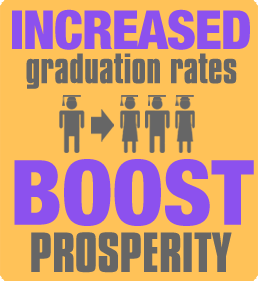
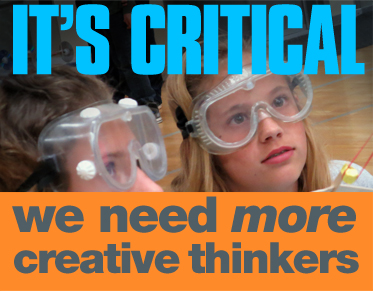
The leaders of every industry for the 21st Century agree that our economy can only grow if we have more creative problem solvers.
The skills to succeed are needed so kids don't succumb to failure and crime. Safer, more engaged communities are a proven result in numerous studies of how arts in education can impact a student's future ambition and behavior.
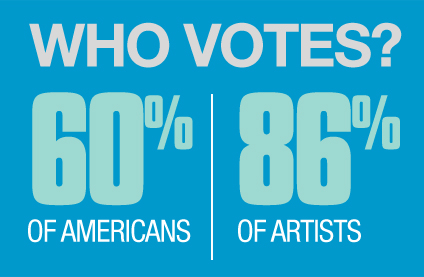
Increased graduation rates boost prosperity
"GE hires a lot of engineers. We want young people who can do more than add up a string of numbers and write a coherent sentence. They must be able to solve problems, communicate ideas, and be sensitive to the world around them. Participation in the arts is one of the best ways to develop these abilities."
President of the General Electric Foundation
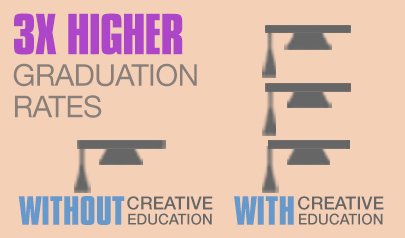
Our future economy demands better-educated workers. Research proves that children and teenagers receiving a more creative education are three times more likely to stay in school and graduate.
Over time, art classes have been the first to be cut from the budget, the last to be restored and often unavailable for low-income students. That’s vitally relevant, given the poverty levels in Fresno County, where 84% of our students qualify for a free or reduced price lunch.
In Fresno County, our dropout rate is higher than the state average.
For children who are low-income and live in impoverished neighborhoods, art programs can keep at-risk youth off the streets, and, consequently, away from correctional institutions.
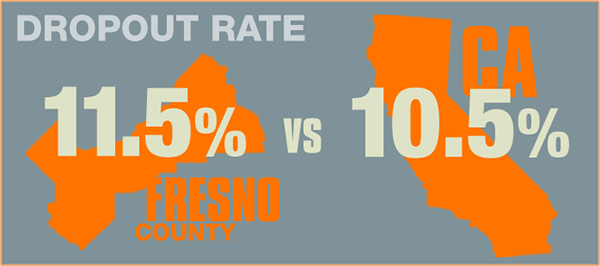
At-risk students with a history of art involvement have higher college enrollment rates than their at-risk peers who didn't pursue art education and are three times more likely to earn Bachelor's degrees than their peers.
Students who didn't take art classes are five times more likely to drop out of school before graduation.
Arts education can help disadvantaged children to realize their full potential as it provides a safe harbor for those who may lack a supportive environment at home.
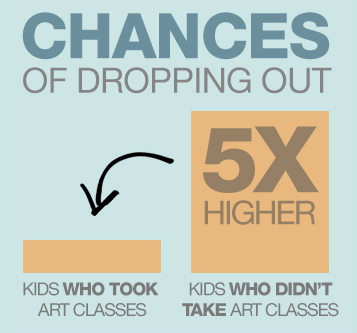
The best hope for the future of Fresno rests in keeping our kids in school, and encouraging their creativity and innovation.
Art classes motivate students to stay in school, especially low-achieving students, by fostering closer ties with peers and creating community-oriented environments.
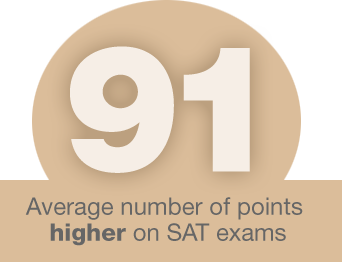
Students who took four years of art classes scored 91 points higher on their SAT exams than those who took half a year or less.
Overall, arts-involved kids stay out of trouble, have higher self-esteem and feel more connected to their community. They also have higher career goals and are more likely to be civically engaged as young adults.
Students who regularly participated in art classes were four times more likely to be recognized for their achievements, to participate in a math and science fair or to win an award for writing an essay or poem than children who do not participate.
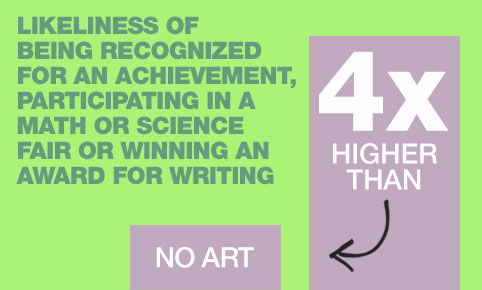
According to a report by Americans for the Arts, art education strengthens problem-solving and critical-thinking skills. The experience of making decisions and choices in the course of creating art carries over into other parts of life.
"If they are exploring and thinking and experimenting and trying new ideas, then creativity has a chance to blossom," says MaryAnn Kohl, an arts educator and author of numerous books about children's art education.
It's critical we need more creative thinkers
"In my own philanthropy and business endeavors, I have seen the critical role that the arts play in stimulating creativity and in developing vital communities... the arts have a crucial impact on our economy and are an important catalyst for learning, discovery and achievement in our country."
Co-Founder, Microsoft
In all socioeconomic groups, an arts education helps to close the achievement gap, improves academic skills essential for reading and language development, and advances students’ motivation to learn.
What it means for Fresno is laying the groundwork for a better future for everyone by producing the creative thinkers needed for the 21st Century global economy.
It comes down to this: the economic problems Fresno faces require a new generation of problem solvers.
WHY?
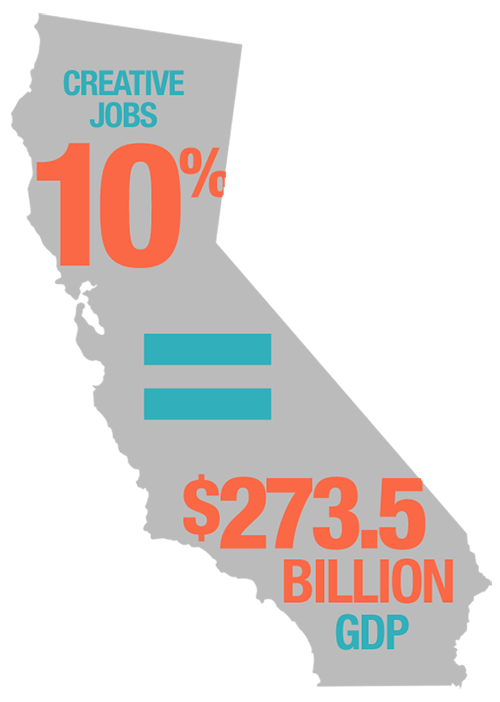
Statewide, one in 10 jobs are in creative industries that generate $273.5 billion in yearly revenue, producing almost 8% of the state’s gross domestic product.
Creatively-driven industries employed 1.4 million workers who earned $99.3 billion in labor income and paid nearly $13 billion in state and local taxes.
According to a survey conducted by American Management Association (AMA), skills such as Critical thinking and problem solving, Communication, Collaboration, and Creativity and innovation (the four Cs) will become even more important to organizations in the future.
The survey also shows that managers and executives believe it is easier to develop these skills in students (58.6%) than it is to develop them in experienced workers (28.8%) with no arts education. This may suggest that students and recent graduates may be more open to new ideas vs experienced workers with established work patterns and habits.
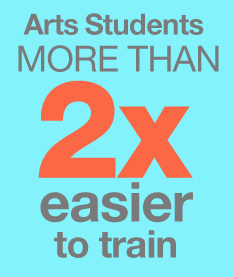
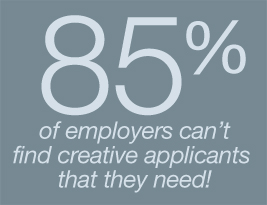
However, even though employers say that creativity is their number one concern when hiring new workers, 85% can’t find the creative applicants they need.
The skills to succeed are needed so kids don’t succumb to failure and crime
“As a prosecutor, I know that crime prevention pays far greater dividends than prosecution... Children whose hearts and minds are nourished and challenged in wholesome ways — such as by art, dance, theater, and sports — are much less likely to succumb to the lure of crime.”
Maricopa County District Attorney, Arizona
Safer, more engaged communities are a proven result in numerous studies of how arts in education can impact a student’s future ambition and behavior.
Research reveals that when both general and at-risk young people study the arts they not only show heightened academic standing, but also a strong capacity for self-assessment and a secure sense of their own ability to plan and work for a positive future.
The report, Champions of Change: The Impact of the Arts on Learning reviews research conducted by scholars from Columbia University’s Teachers College, Harvard University, Harvard’s Project Zero, Stanford University, the University of California at Los Angeles and the University of Connecticut.
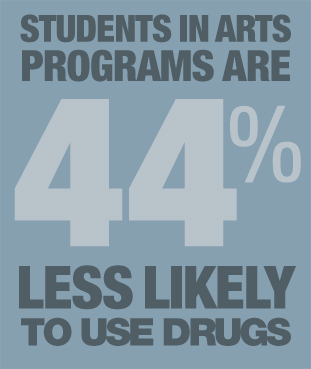
The researchers found that arts education can enhance academic achievement, reach students on the margins of the educational system, create an effective learning environment, and connect learners’ experiences to the world outside of school. Multiple studies cite strong positive impacts across socioeconomic groups with respect to both academic and personal success.
An even more compelling advantage is the striking success of arts-based educational programs among disadvantaged populations, especially at-risk and incarcerated youth, by:
- Lowering recidivism rates
- Increasing self-esteem
- Developing much needed creative thinking, problem solving and communications skills
- Aiding in the acquisition of job skills necessary to become economically self-sufficient over the long term, rather than becoming a financial strain on their states and communities
According to “The arts and achievement in at-risk youth: Findings from four longitudinal studies” by the National Endowment for the Arts, extensive and deep involvement in arts activities was a significant predictor of students’ later academic achievement and community involvement, volunteerism and political participation.
In another study, researchers investigated the effectiveness of Urban Improv, a school-based interactive and educational program that has used structured improvisational theater to teach violence prevention, conflict resolution, and decision-making skills to Boston public school students since 1992.
Participation in the program halted the progression of aggressive and violent behavior while demonstrating an increase in levels of all pro-social behaviors, including cooperation, assertiveness and self-control.
It’s a pattern that is being repeated throughout the country. In Fort Myers, Florida, started Success Through Academic and Recreational Support (STARS) in 1989 as a multifaceted arts studies and crime prevention program for at-risk youth. The cost for each participant is $850 per year, compared with as much as $28,000 per youth in the typical juvenile boot camp.
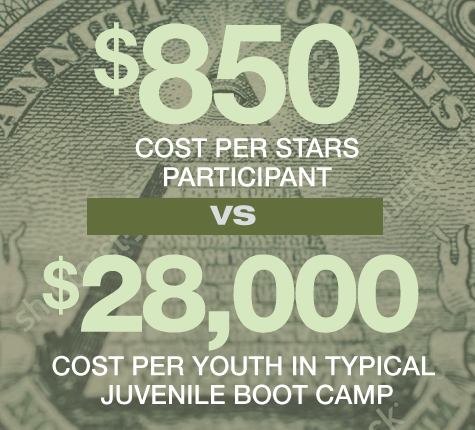
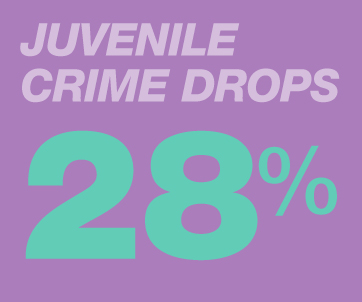
At the start of the STARS Program, 75 percent of the children were making less than a C average; now 80 percent are making a C average or better. Since the program’s inception, juvenile crime has dropped 28 percent, and for youth ages 11 and 12, the rate of recidivism has dropped 64 percent.
Consider The Boys Choir of Harlem in New York, which was created in 1985 as an after-school program to provide an alternative to community despair and to standard education and social programs, has grown into a nationally recognized school and after-school program. To date, 98 percent of the participants have gone on to college.

In Texas, the Dallas Parks and Recreation Department initiated the Juvenile Gang Prevention Program in 1991 in response to an influx of gang activities. In this free program participants between the ages of 10 and 18 create plays and visual works of art based on personal experiences including gang violence and drug and alcohol abuse. Now in its 10th year, the noteworthy program has an 80-percent attendance rate and rival gang members work together on projects and relate to one another while working collaboratively on projects to achieve a positive outcome.
It’s a fact: when students participate in a creative education our city is more secure, crime is reduced and the potential for kids to become positive contributors to our economy is increased.
